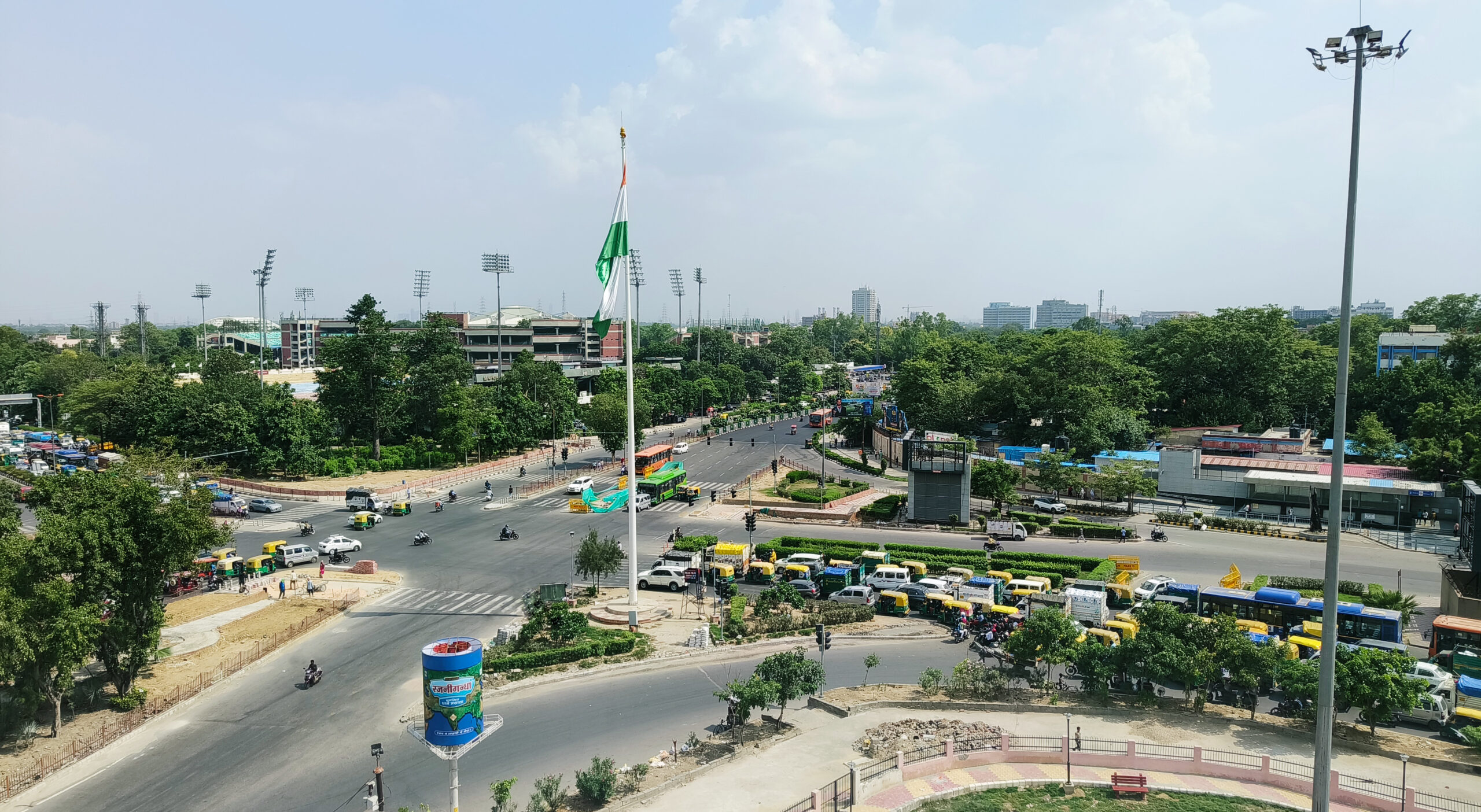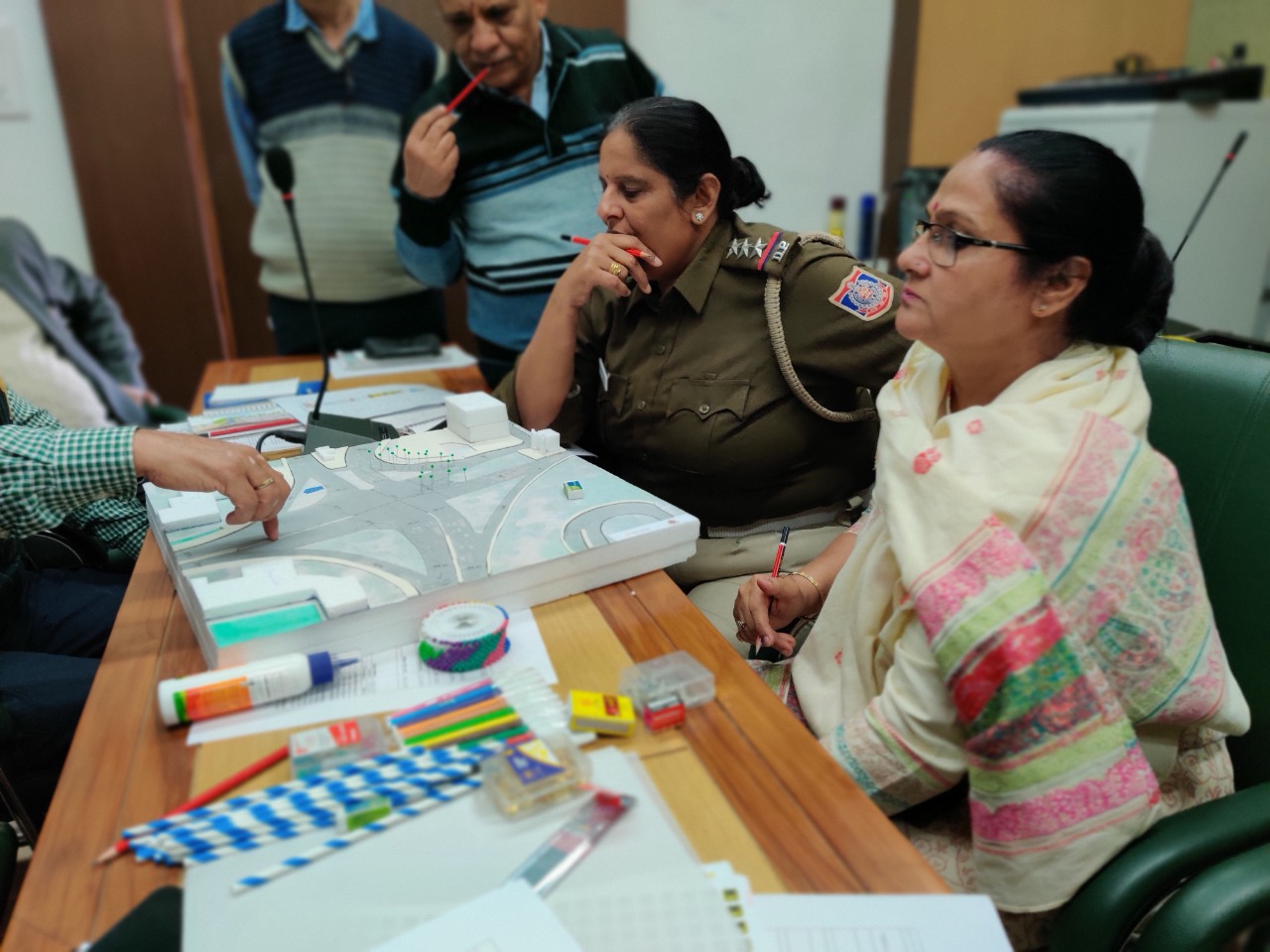
From a road safety standpoint, intersections are one of the most critical parts of a city’s streetscape and transportation network. In most cities, they account for the highest number of interactions between vehicles and pedestrians.
To increase safety at one high-risk intersection in Delhi, the Delhi Gate Junction, WRI India partnered with Delhi Traffic Police and the Public Works Department under the Bloomberg Philanthropies Initiative for Global Road Safety. Located in Shahjahanabad, one of the densest areas of the city, the Delhi Gate Junction is an important node connecting many landmarks. But with a vast unmanaged crossing and traffic area and lack of pedestrian facilities, it was also a black spot for road safety; from 2017-2020, it saw 49 crashes and 18 fatalities.
This is not the case today. Through strong inter-departmental coordination, workshops, engagement and design, it is now being transformed into a safer and more inclusive intersection with large areas reclaimed for placemaking.
Delhi Gate’s three-step journey from being a high-risk intersection to one where pedestrians are safer and traffic is more efficient is an example that Delhi is now working to replicate elsewhere.
Step 1: Capacity-Building, Collaborative Learning and Design Workshop
WRI India convened the Delhi Traffic Police and Public Works Department at a capacity-building workshop in 2019. The workshop focused on the need for safer design and infrastructure in the city and involved a group activity where participants highlighted safety issues at Delhi Gate Junction and provided corresponding design solutions. The workshop facilitated discussions on why infrastructure improvement is critical to reducing road traffic crashes. The participants identified many issues, including speeding due to the large junction size, lack of pedestrian infrastructure and undefined spaces.
The exercise proved to be a success, as several of the solutions first suggested at the workshop ended up being incorporated into the final design of Delhi Gate Junction.

Step 2: Temporary Implementation of Select Solutions
Temporary trials in road safety projects help inexpensively test solutions on the ground. They also help garner feedback from affected stakeholders and the community before final solutions are implemented.
Temporary changes at Delhi Gate Junction were undertaken from April to August 2021, using cones, barricades and paint. The design aimed to make the junction more compact, streamline vehicle lanes, reclaim residual spaces and create spaces for pedestrians to halt before crossing.
The design helped reclaim 4,500 square meters of pedestrian space, reducing the junction size by 70% without any reduction in vehicle lanes while simultaneously reducing crossing distances by 33%. Some 2,500 square meters were reclaimed for refuge islands and 2,000 square meters for pedestrian crossings. Among pedestrians who were asked about their post-trials experience, 96% said that they now felt safe crossing the junction.

Step 3: Permanent Changes to the Junction
The trial at Delhi Gate Junction was a first-of-its-kind learning experience for the city and well-received by both authorities and citizens. One of the major concerns city authorities often have while introducing road safety interventions is the impact that it will have on traffic movement. The trial showcased how traffic circulation in fact became smoother as the number of conflicts between pedestrians and vehicles was reduced. The project also proved to be an example of successful inter-departmental coordination and execution.
Given the success of the trial, city authorities decided in April 2022 to permanently implement WRI India’s recommended design. The problems of Delhi Gate Junction are not uncommon for intersections across the city and across many cities in India. This approach serves as an example of the kind of changes that can improve results for vehicles and pedestrians. Indeed, Delhi is now looking at taking a similar approach to other junctions to create a city that is safer and more inclusive for all road users.
Priyanka Sulkhlan is Senior Program Manager, Transport at WRI India’s Ross Center for Sustainable Cities.
Revathy Pradeep is Program Manager, Transport at WRI India’s Ross Center for Sustainable Cities.





